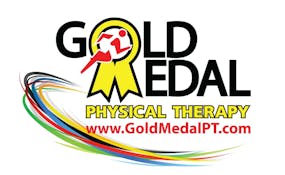Exercise is one of the best things you can do for your health. It can reduce your risk of chronic diseases like diabetes or cancer. It reduces your risk of stroke, dementia, osteoporosis, and obesity. Exercise also helps with your mood, sleep, and overall quality of life.
Despite all of these benefits, most Americans need more. According to the Department of
Health, 80% of Americans don’t meet the recommendations for physical activity. This is
impacting our health. About half of American adults have a preventable chronic disease.
The good news is that exercise positively impacts seven of the ten most common ones.
That leads to the question:
Are you getting enough activity?
Here are the current guidelines:
● Preschool-aged children (ages 3 – 5) at least 3 hours of physical activity daily
● Children and adolescents (ages 6 – 17) at least 60 minutes of activity a day
● Adults 150 minutes of moderate-intensity aerobic activity weekly and muscle strengthening activities on at least two days
● Older adults (ages 65 and older) Same as the adults above with additional
components added, such as balance training
If you’re falling short on physical activity, you may not think of your PT as someone who can help, but you should!
Physical therapists have extensive training in anatomy, physiology, and movement science. They can get anybody moving! Here are some great times to choose a PT to help with your fitness:
● You’re recovering from an injury or surgery.
● You have pain or limitations that affect your movement.
● You have a chronic condition that affects your fitness, like arthritis.
● You need help improving your balance or preventing falls.
● You want a personalized program that addresses specific weaknesses or imbalances.
Your PT can work with your physicians and medical team to ensure safe workouts. As you
progress, they can also work with professionals like strength coaches or personal trainers to take your fitness to the next level.
With your PT’s guidance, you can address limitations, prevent injuries, and design a
personalized program that keeps you motivated and moving towards a healthier you.
References:
1) Building motivation and sustainability into the prescription and recommendations for physical
activity and exercise therapy: The evidence, Physiotherapy Theory and Practice, 25:5-6, 424-441,
a. DOI: 10.1080/09593980902835344
2) The physical therapist’s role in physical activity promotion. British Journal of Sports Medicine
2009;43:99-101.
a. https://bjsm.bmj.com/content/43/2/99.citation-tools
3) Improving Adherence to Exercise: Do People With Knee Osteoarthritis and Physical Therapists Agree
on the Behavioral Approaches Likely to Succeed?.
a. Arthritis Care Res, 70: 388-397. https://doi.org/10.1002/acr.23297
4) Periodization and physical therapy: Bridging the gap between training and rehabilitation
a. https://www.sciencedirect.com/science/article/abs/pii/S1466853X1500067X
Articles/Content:
1) Physical Activity Improves Your Health and Quality of Life
a. https://www.choosept.com/video/physical-activity-improves-health-quality-life
2) Home Exercise From a Physical Therapist
a. https://www.choosept.com/video/home-exercises-floor-mat
3) Tips to Avoid Overtraining
a. https://www.choosept.com/health-tips/tips-avoid-overtraining-injurie
